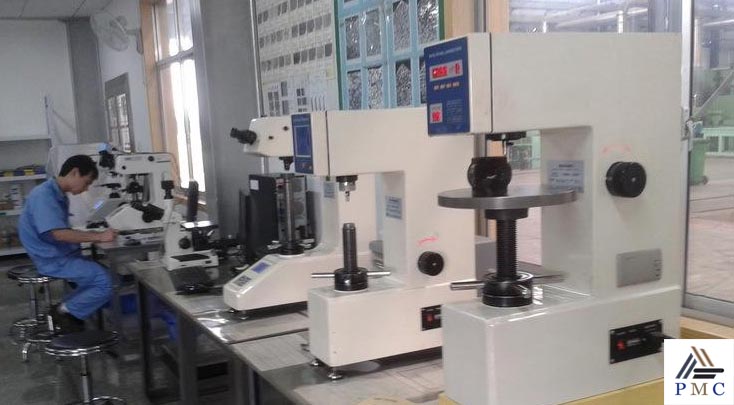
How to Simply Check the Hardness of Seamless Steel Pipes?
Date:2022-03-11 keywords: pipe hardness, seamless steel pipes
The surface quenching and tempering heat treatment of seamless steel pipes is usually carried out by induction heating or flame heating. The main technical parameters are surface hardness, local hardness and effective hardened layer depth. Vickers hardness tester can be used for hardness testing, Rockwell hardness tester or surface Rockwell hardness tester can also be used. The selection of the test force (scale) is related to the depth of the effective hardened layer and the surface hardness of the seamless steel pipe. There are three durometers involved here.

1. Vickers hardness tester is an important means to test the surface hardness of heat-treated seamless steel pipes. It can use a test force of 0.5-100kg to test the surface hardened layer as thin as 0.05mm thick. It has the highest accuracy and can distinguish the heat treatment. Small differences in surface hardness of seamless steel pipes. In addition, the depth of the effective hardened layer is also detected by a Vickers hardness tester. Therefore, it is necessary to have a Vickers hardness tester for units that perform surface heat treatment processing or use a large number of surface heat treatment seamless steel pipes.
2. The surface Rockwell hardness tester is also very suitable for testing the hardness of surface quenched seamless steel pipes. There are three scales for the surface Rockwell hardness tester to choose from. Various case-hardened seamless steel pipes with an effective hardening depth exceeding 0.1mm can be tested. Although the accuracy of the surface Rockwell hardness tester is not as high as that of the Vickers hardness tester, it has been able to meet the requirements as a detection method for quality management and qualification inspection of heat treatment plants. Moreover, it also has the characteristics of simple operation, convenient use, low price, rapid measurement, and direct reading of hardness values. Using the surface Rockwell hardness tester, batches of surface heat-treated seamless steel pipes can be quickly and non-destructively tested piece by piece. This is of great significance for seamless steel pipe processing and machinery manufacturing plants.
3. When the surface heat treatment hardened layer is thick, the Rockwell hardness tester can also be used. When the thickness of the heat treatment hardened layer is 0.4-0.8mm, the HRA scale can be used, and when the thickness of the hardened layer of the seamless steel pipe exceeds 0.8mm, the HRC scale can be used.
The three hardness values of Vickers, Rockwell and superficial Rockwell can be easily converted to each other and converted into standard, drawings or hardness values required by users. The corresponding conversion table has been given in the international standard ISO, American standard ASTM and Chinese standard GB/T.
The hardness of seamless steel pipe is divided into:
① Scratch hardness. It is mainly used to compare the degree of softness and hardness of different minerals. The method is to select a rod with one end hard and one soft at the other, and scratch the tested material along the rod, and determine the softness and hardness of the tested material according to the position of the scratch. Qualitatively speaking, the scratches made by hard objects are longer, and the scratches made by soft objects are shorter.
② Press-fit hardness. Mainly used for seamless steel pipe materials, the method is to press the specified indenter into the tested material with a certain load, and the size of the local plastic deformation on the surface is compared with the hardness of the tested material. Due to the difference of indenter, load and load duration, there are many kinds of indentation hardness, mainly Brinell hardness, Rockwell hardness, Vickers hardness and microhardness.
③ Rebound hardness. Mainly used for seamless steel pipe materials, the method is to make a special small hammer fall freely from a certain height to impact the sample of the material to be tested, and use the sample to store (and then release) the strain energy during the impact process (through the small hammer). The rebound height determination) determines the hardness of the material.
News Update :
45° Short Radius Elbows and Long Radius Elbows...
©2017 Permanent Steel Manufacturing Co.,Ltd https://www.permanentsteel.com All Rights Reserved.
Terms of Sale|Privacy Policy


